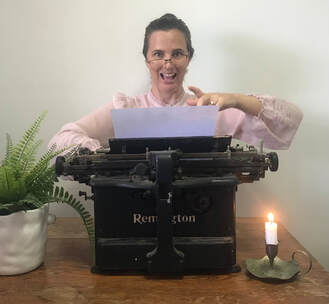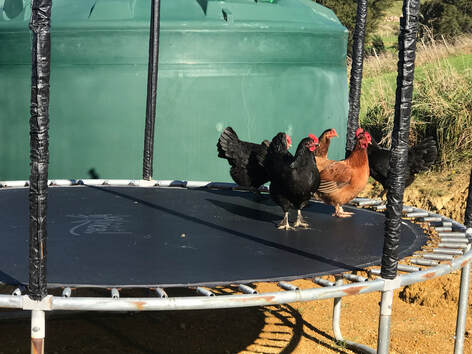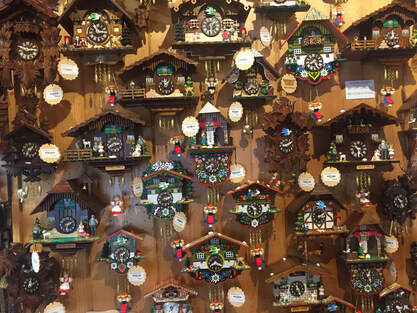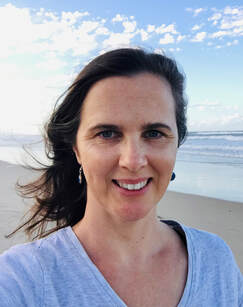 I’ve been very slack about keeping up my blog (the last post was over a year ago. Did anybody even notice? Only me? Lol).. Anyway, the views I express on my posts are my own and are not affiliated with any organisation with which I happen to hold membership. I’ll probably make a few punctuation mistakes because this blog is one of my creative playgrounds and I’m trying to win the battle against my perfectionism. Anyway, lets move on! A lot has happened in 18 months and digression plays a key part. I wanted to provide an update for you, my ten dear loyal fans. If you’re reading this, you’re one of them, so thanks. First, I’m still a university student, ploughing through my Masters. I’ve submitted a request to upgrade to a PhD in light of some (in my opinion) quite fascinating fresh findings so I’m keeping my fingers and toes crossed because honestly, I bloody love researching and I also adore behaving like an (academic) hermit. I mean, I’m not actually alone that much but I’m certainly not spending my days with 1000 other people like I used to. I do however live with four other adult-size people. Where was I? Oh yes, end of last year I got diagnosed with A.D.H.D. It’s honestly such amazing news so don’t go sighing with sympathy. And no, it’s not just something little boys who can’t sit still in class have. Girls have it too, in undiagnosed droves. And even though I spent a decade working in schools I never recognised my own freaking great redwood for the branch-waving saplings in front of me. I mean, I was the teacher so I got to move around and didn’t have to try and sit still for a whole 70 minutes 4 x a day. After 40-plus years I finally have a framework for understanding why I am either a tornado or a couch potato and never anything in-between. Turns out my sensitivity to noise, my queue rage, my chronic anxiety, my deep feelings, my mental zoning in and out of conversations (and my nodding to pretend I am not zoning in and out of conversations) and unwillingness to tear myself away from my special interest du jour are actually tell-tale traits of this neurobiological difference (I say pooh to calling it a 'disorder'). I like these things about myself – OK, maybe I need to work on the queue rage and the anxiety could dial it down a little. Since finding out about the ADHD, though, my anxiety really has plummeted. I now know why I lose ALL THE STUFF ALL THE TIME. I have paid plenty of ADHD tax with hours of confounded circling on the spot trying to remember where my keys and wallet are. Turns out my working memory is a bit patchy but happily my long-term memory is on par with an elephant’s. If I read it and I like it, it’s going to stick, like probably forever. Then, heads up, I'll tell you all I know about the subject whether you like it or not. Getting a Bujo has helped with the absentmindedness (thanks to the friend who put me on to this!). I’m one of the estimated 1 million Australians living with ‘a Ferrari brain with bicycle brakes’ as world-renowned psychiatrist and fellow ADHDer Dr Ned Hallowell so aptly puts it. 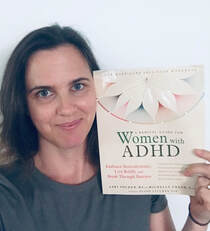 One of my amazing friends bought me this useful workbook to help me celebrate my diagnosis :) One of my amazing friends bought me this useful workbook to help me celebrate my diagnosis :) Girls like me want to fit in and boy do we try. It’s called masking and I’d say the masks we wear in public are even more ornate than those fantastical designs tourists can pick up in Venice. I’m usually running late because I’ve tried to pack three too many extra tasks into my day. Sometimes I splutter out explanations because I've got four different ones lined up in my head. I have a million systems for staying organised and yet I struggle to stay organised. Check out the work of Jessica McCabe and Lou Brown (ADHD advocates) if you want to know more. Funnily enough, a few years ago I had a poem accepted for Femagogy magazine. One verse is as follows: In my class there’s a boy who behaves like a tongue-lolling pup. He’s bounding about and chasing his tail, Until the other kids shout, ‘Shut up.’ Turns out the 'boy' I was writing about was myself and I didn't even know it. I mean I was a more a daydreamer than a kid with a case of the zoomies, but having been the owner of a Labrador Retriever for 12 years I can honestly say, these kind of pups are my totem animal, my kindred spirit and were the inspiration behind the metaphor. Now I know that I have ADHD, I can better understand where some of these pups/kids heads might be at. So any teachers reading, if you’ve got a kid in your class who constantly jiggles his leg or twirls her hair around her finger or chews their pen lids, my personal advice is DON’T MAKE THEM STOP. Disclaimer: One of my students did accidentally swallow their two-inch plastic pen lid once so do stay alert and be ready to step in to perform CPR in necessary. Happily, three days later the student reported to me that the lid had successfully reappeared… I don't know if they had ADHD. OK, what’s this all really got to do with me living my best life? I don't think I'm full of character flaws anymore. My brain just works differently and its actually pretty cool. For the first time I have stopped trying to fit into the neurotypical way of structuring my life. I need Projects with a capital P to keep my interest fired up. But if I take on too many because a) I have a hard time saying no and b) hey look, shiny new thing, I’ll get overwhelmed. Now I know why and I can put steps in place to nip it in the bud earlier (mostly). Part of what I love about conducting a research project is that I can fit in my need to fidget around it. Though I thought it a long shot, I backed myself and applied for a scholarship while ignoring the little voice in my head who questioned ‘who is going to actually pay someone like me to write? Well, gosh darn it, I won it, thank you very much! When I clicked on the congratulatory email, I slid sideways in my chair. I felt like I’d won the lotto. Somebody else thinks what I am doing research-wise is important. In other news I’ve got two author talks coming up in the city in July. Here in Brisbane Square Library and here in Ashgrove. I’ll be talking about my novel The Branded Ones. Themes are homelessness, addiction, teen peer pressure and post-natal mental health. But really, at its core it’s a love story (I loved Trent Dalton’s Love Stories that he gleaned from people in the very same city in which my own novel is set). My story is about people just trying to heal through connection so that they can thrive. To be clear, I published my book first so I didn’t copy Trent. He didn’t copy me either because he’s famous and I’m definitely not so he probably has no idea who I am or that I have written a book. We do have Bracken Ridge in common, so perhaps that's something. Anyway, I hope some of you S.E. Queensland locals can come along for one of my talks. I’d love to see your friendly faces there.
Thank you to my friends and family members, colleagues and Uni supervisors, well-adjusted or currently feeling otherwise. I am also pinching myself at the thought that I have recently managed, after a two-and-a-half-year separation, to wrap my arms around a few of my New Zealanders. For those I missed, I’m coming back soon so get in line (if you don’t have ADHD you probably won’t feel any rage at having to queue. If you do, well, you may want to check this article out 😉). Jo x For the past nine months I’ve been committing what feels like a subversive act: I’ve stopped dyeing my hair. There are some reasons behind my decision. The first is that while working as a high-school teacher my brain got programmed into thinking in short time compartments. When I lost three hours on a Saturday morning in the salon chair–the requisite small talk adding to my already heavy professional talking burden–and three hours of my Sunday afternoon lesson planning for the week ahead, not to mention ferrying my own children to their weekend activities and catching up on washing, there didn't seem to be enough time left over for a proper recharge. Second, early last year I watched an interesting show on Netflix called Unorthodox about a woman who escapes her cloistered community to go live in Berlin. Before she does there is a scene where, after her wedding, she engages in a ritual where the hair on her head is shaved off and replaced by a wig.
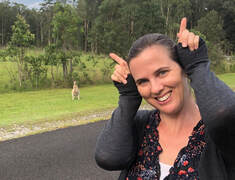 I kept meaning to post a few blogs in 2020 but… I just didn’t want to use the C-word. In teaching, I have heard another C-word spoken often as part of ordinary teen vernacular. It pings back and forth around school like a tennis ball over a net. By the end of the first class of each week I have usually stopped being jolted by the sound of it and started to think about the term objectively, and then nonsensically. How is it that four letters arranged in a certain way have such capacity to shock? They sum up frustration and anger so succinctly, that’s why. You can use it as a noun, a verb and an adjective, and also as a teachable moment. Once, when an adolescent lobbed it across the classroom at their BFF during one of my lessons, I immediately stopped to address it. ‘Do you know what that word means?’ He didn’t, which was absolutely fantastic. I won't lie. These past two months have been amazing. A string of friends and family have made their way across the ditch or up from the south, visits that always make my heart sing, and me start acting like a tourist. As well, after a long list of writing rejections, some of those literary seeds I wrote about back in April have bloody well begun to take over the garden!
I stayed true to my promise to consistently keep writing and submitting - amongst all the teaching - despite an apparent lack of progress. I also thought it wouldn't hurt to share some personality in my queries instead of staying petrified about saying the wrong thing (after reading and re-reading the darn thing ten times to make sure it was error free and professional sounding enough). Turns out editors, agents and publishers are just like you and me, people going about getting their work done. Some of them don't actually seem to mind a little back and forth banter. When I applied the same perspective to my writing, that is, it's essentially a marketable product rather than a gold leaf sliver of my soul, the fear of rejection lost its sting. I'm even grateful for some of those rejections because on closer inspection it was clear the story in question needed more drafting, so I did. |
AuthorArchives
June 2022
|
